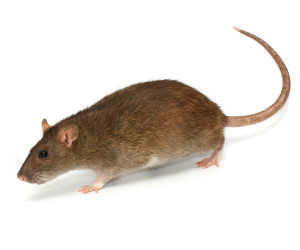Norway Rat

Rodent Control: How to Get Rid of Norway Rats
Control of Norway rats consists of a combination of trapping, exclusion and rodenticide.
Rat control can require multiple services over several weeks. Rats are neophobic which is a condition that causes a fear of new foods. With this condition, new food sources have to be in place for days before rats will be comfortable approaching the source, whether it is a mechanical trap with bait or rodenticide.
Call us to discuss our rodent control options.
How to Identify a Norway Rat Infestation
- The Norway rat builds elaborate systems of tunnels and burrows at ground level
- The Norway rat prefers damp areas like crawl spaces or building perimeters
- They are large rodents that can weigh in excess of 500 grams
- They can reach lengths of 40 cm, and their tails alone may measure up to 21 cm
- The body of the Norway rat is covered in shaggy fur that is brown or gray in colour. Their ears and tail are covered in scales, and the tail is shorter than the head and body
- Seeing them during the day can often indicate a large infestation
- Gnaw marks on food and objects such as utility lines can also indicate a rat infestation
- One of the most well-known signs is their droppings. Norway rat droppings are blunt and 18 to20 cm long
How to Prevent a Norway Rat Infestation
- Garbage cans should have a secure lid and be emptied regularly
- Food, including birdseed and other pet food, should be kept in airtight containers
- Homeowners should fix leaks in plumbing, remove outdoor containers that retain water and ensure sprinklers are not dripping
- Keeping lawns and landscaping maintained is advisable as is removing woodpiles
- Do not leave windows and doors open, particularly overnight when rodents are most active
Possible Health Concerns
- Rats can contaminate food or food preparation areas, which can transmit food poisoning
- Rats can also transmit rat bite fever through bacteria in their mouth
About Rats
- Rats take care of injured and sick rats in their group
- Without companionship, rats tend to become lonely and depressed
- Although very curious animals, rats are also shy and prefer to run away than confront a potential threat
- The Norway rat, also called brown rats, is found on every continent of the world except Antarctica

